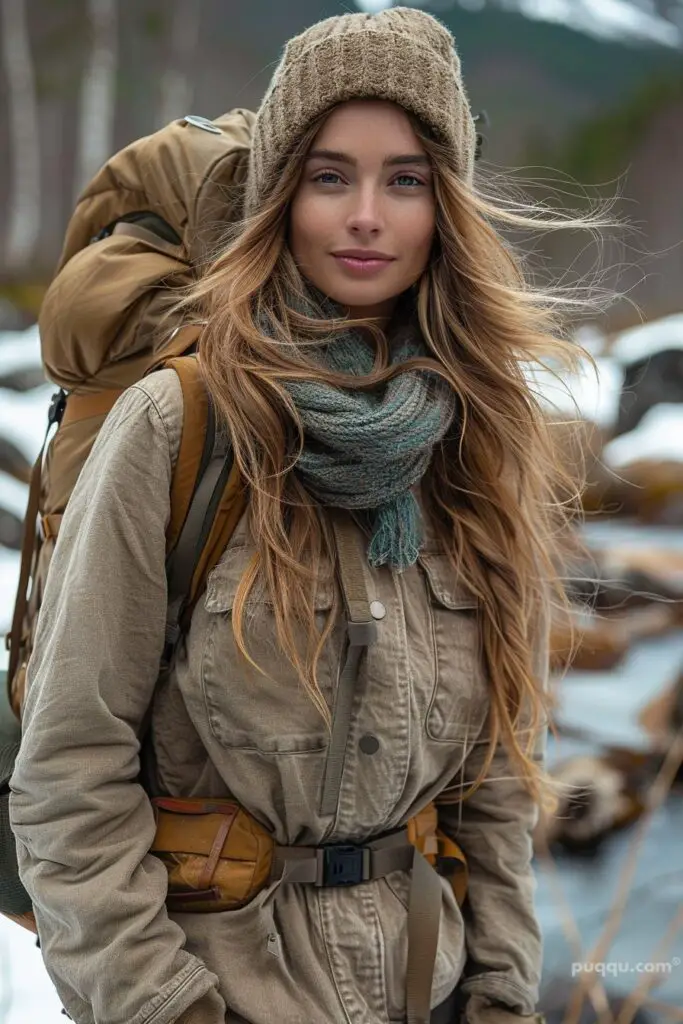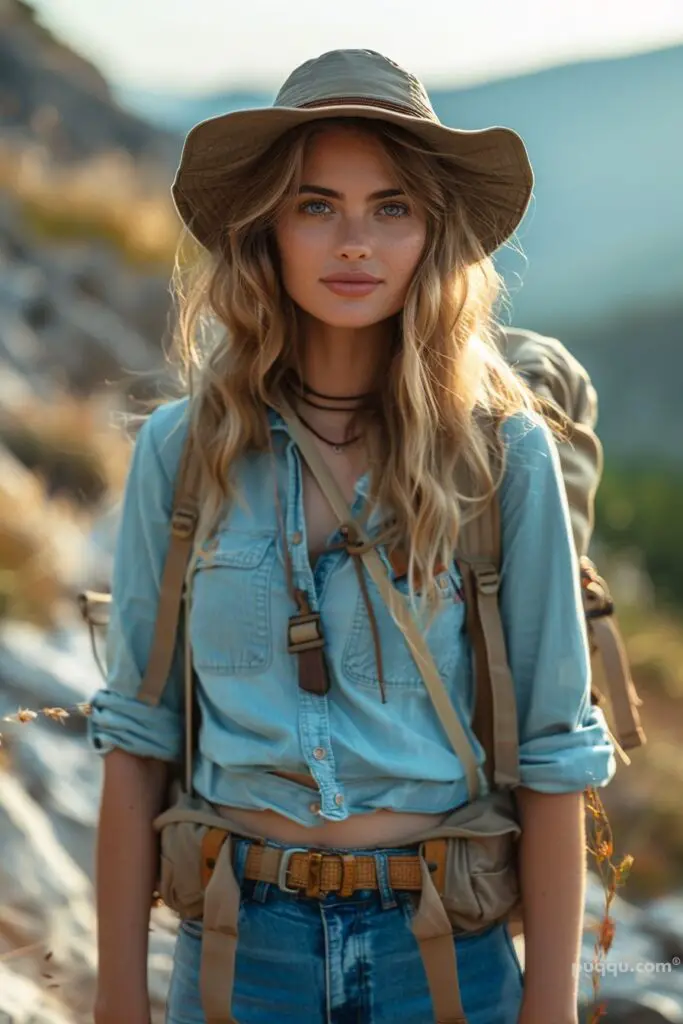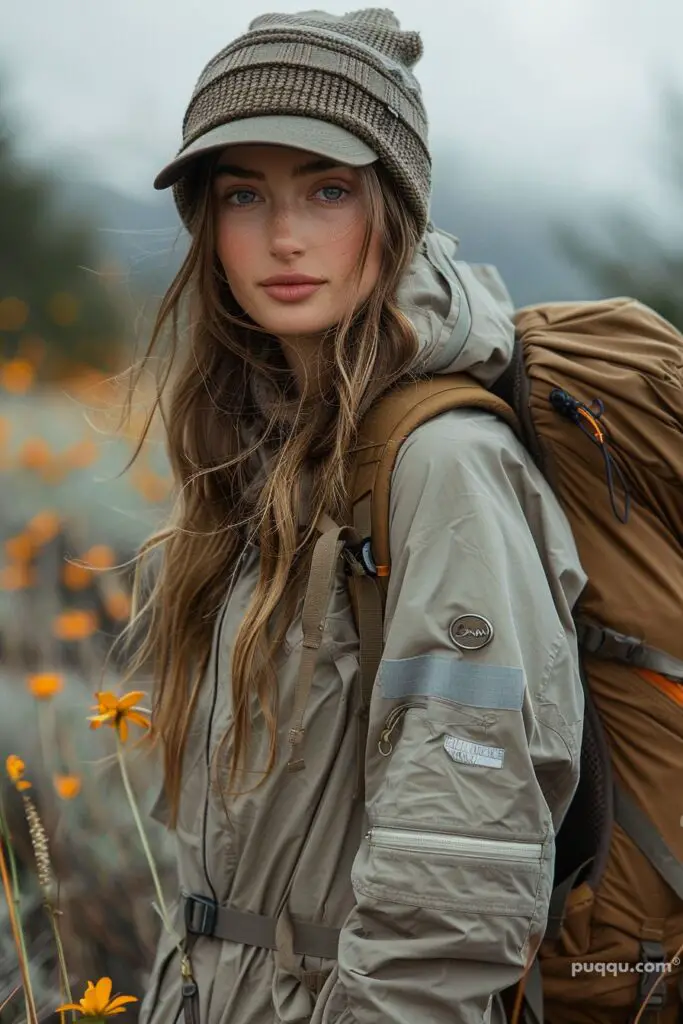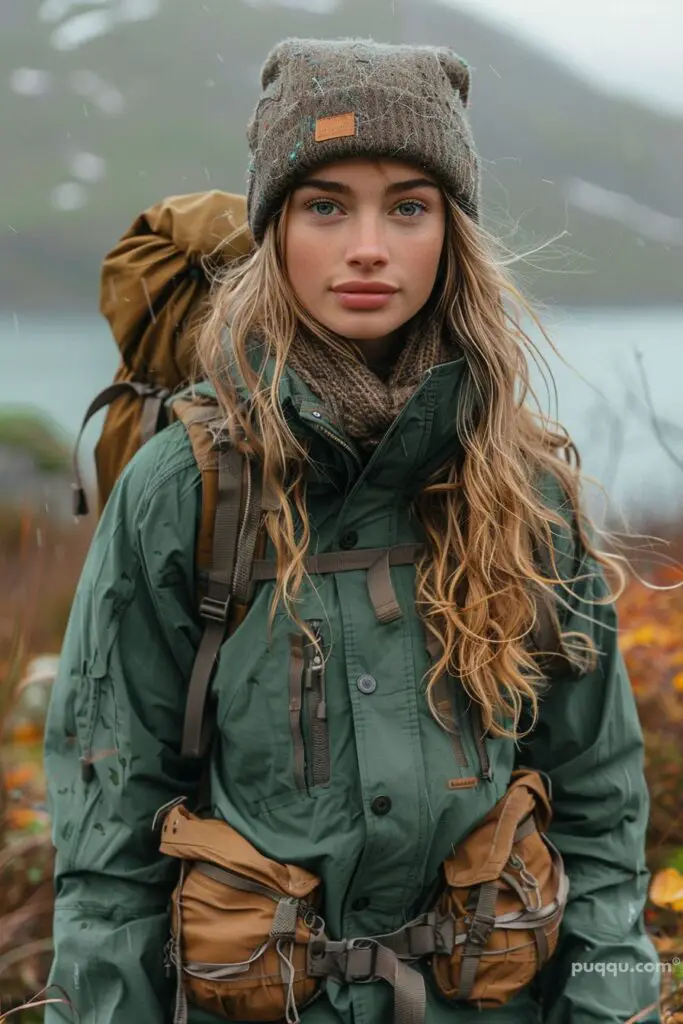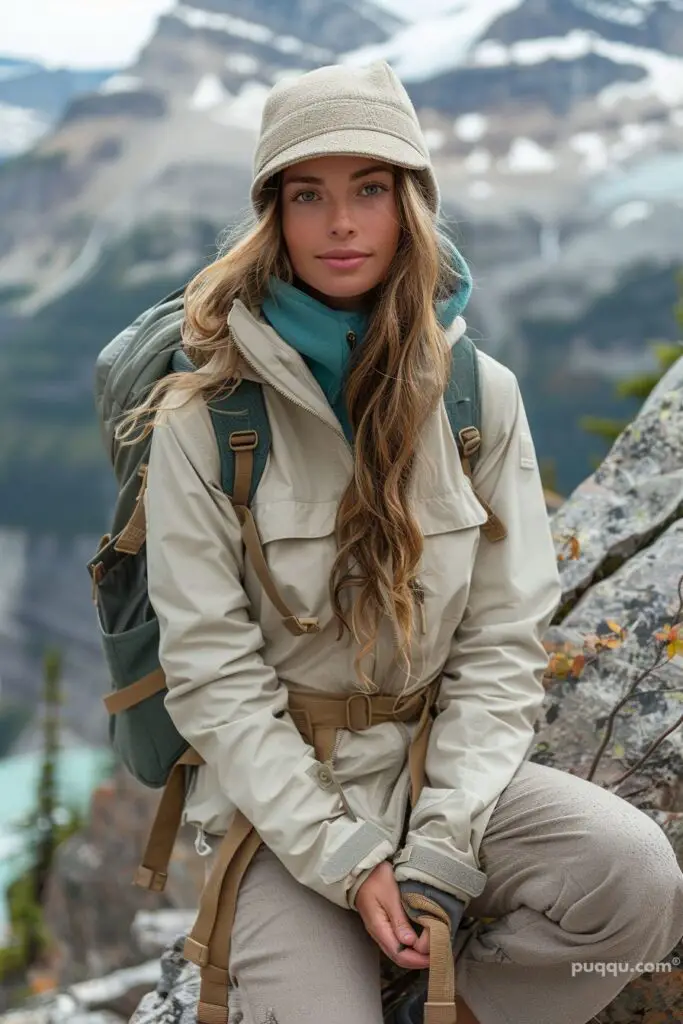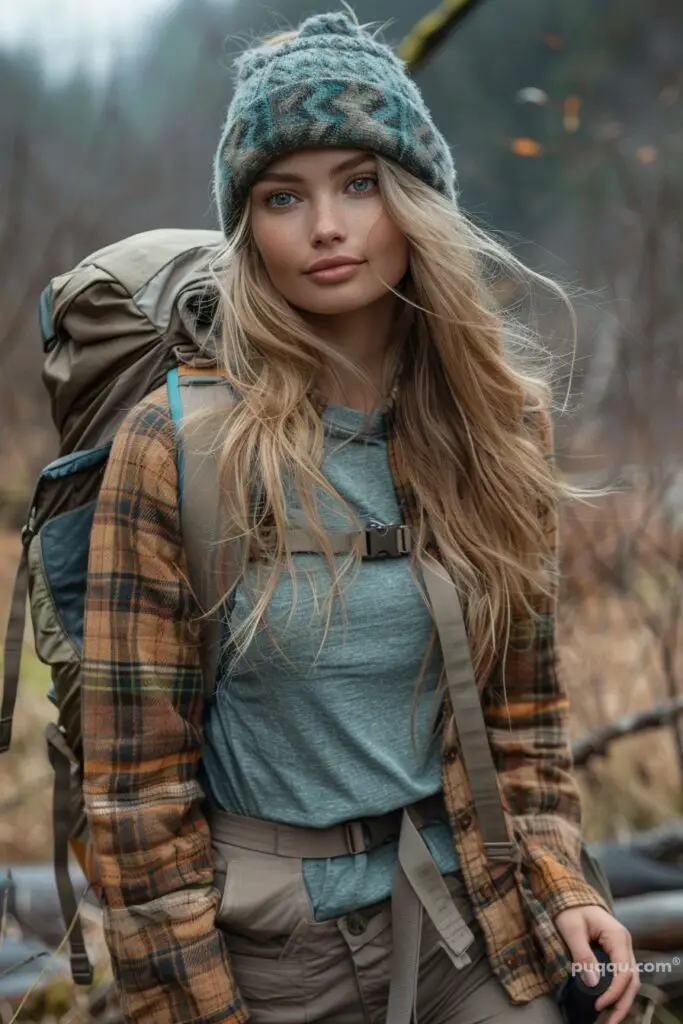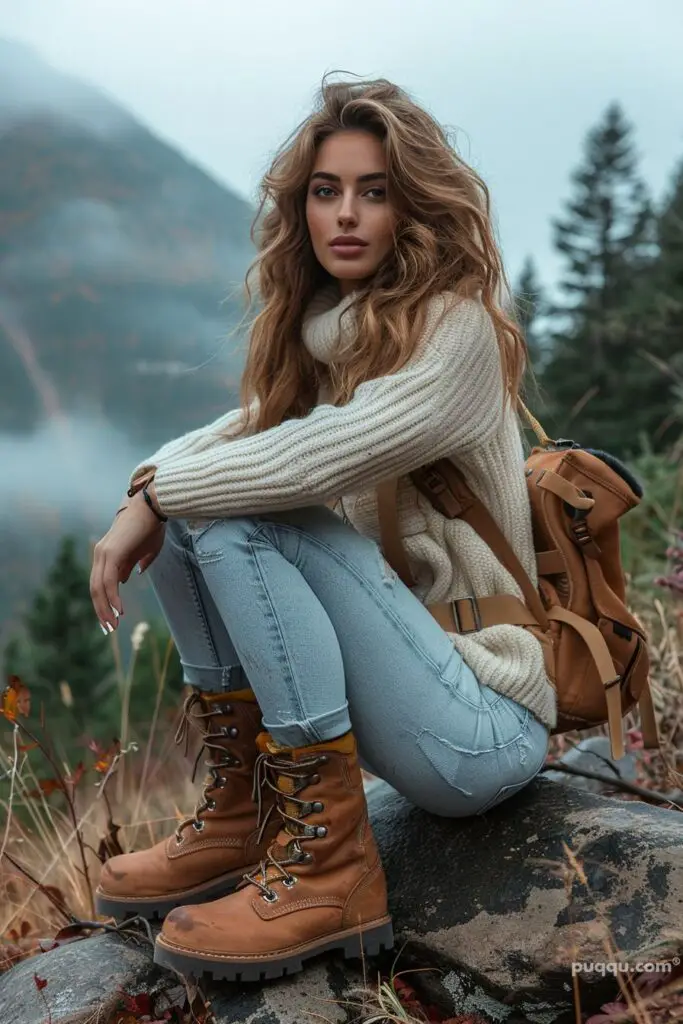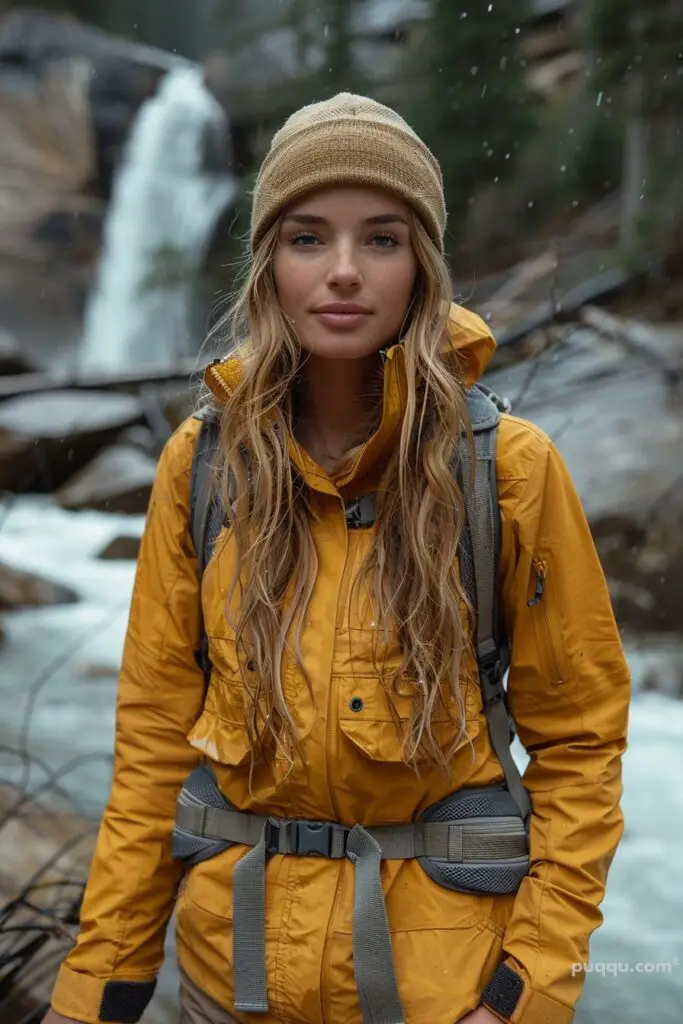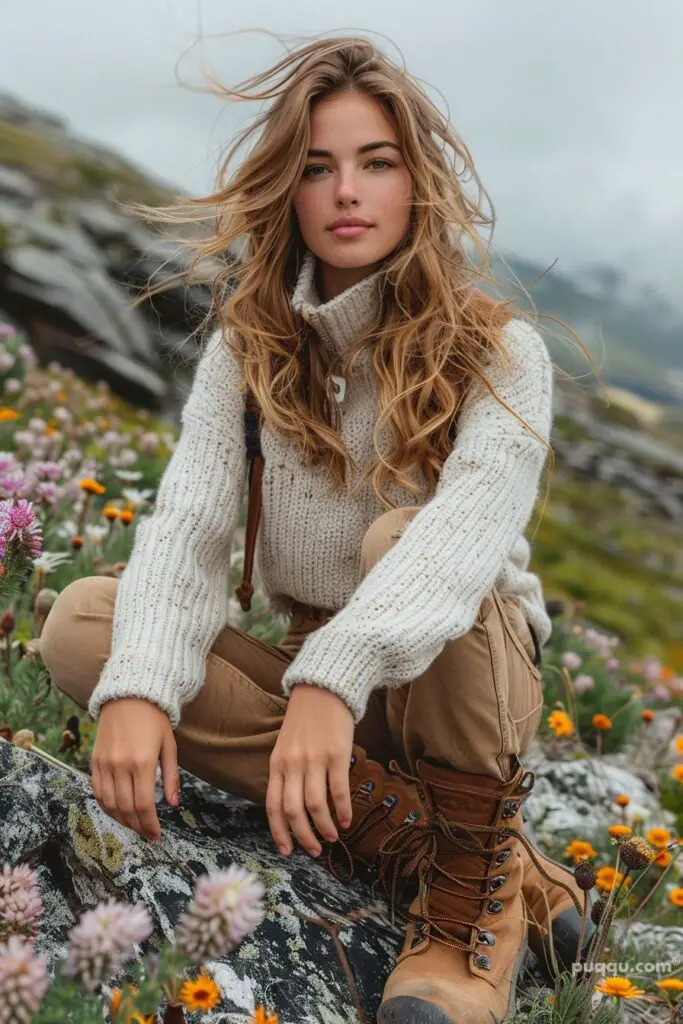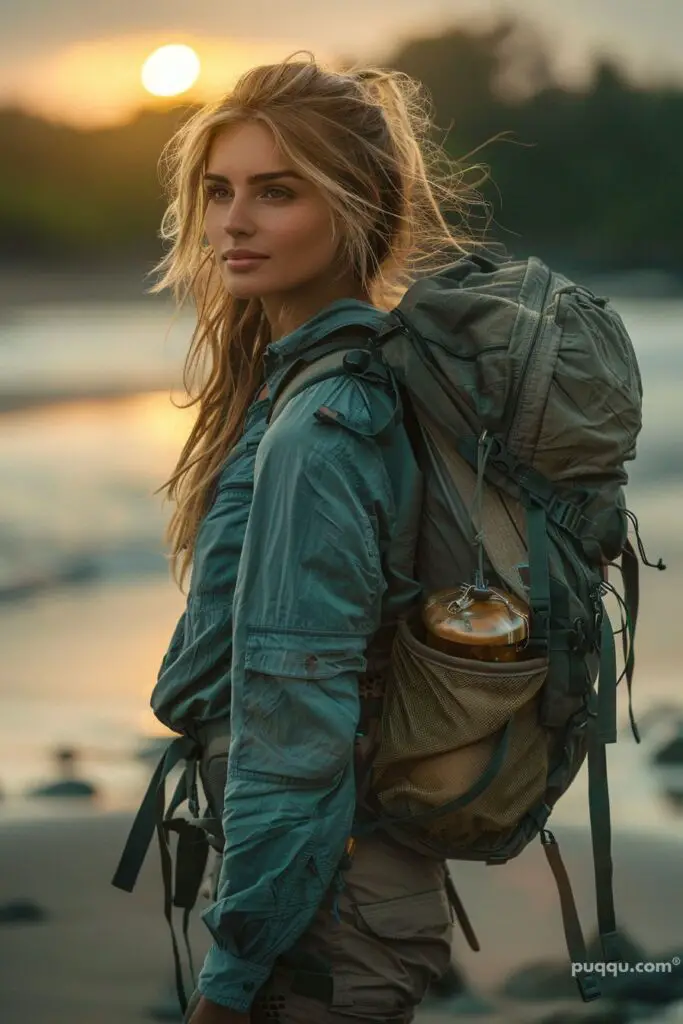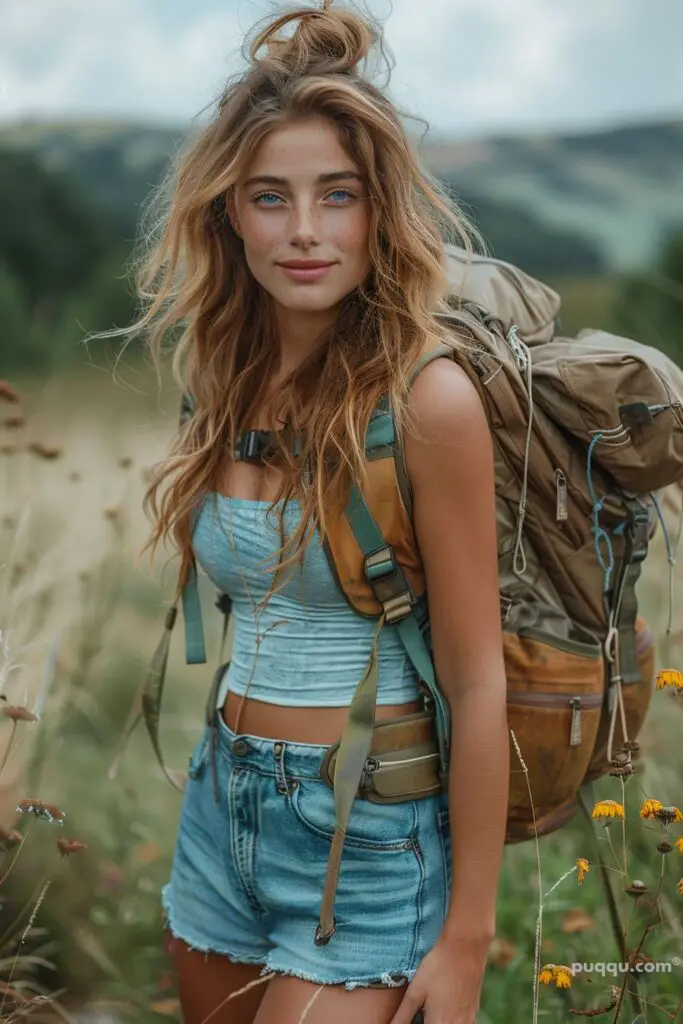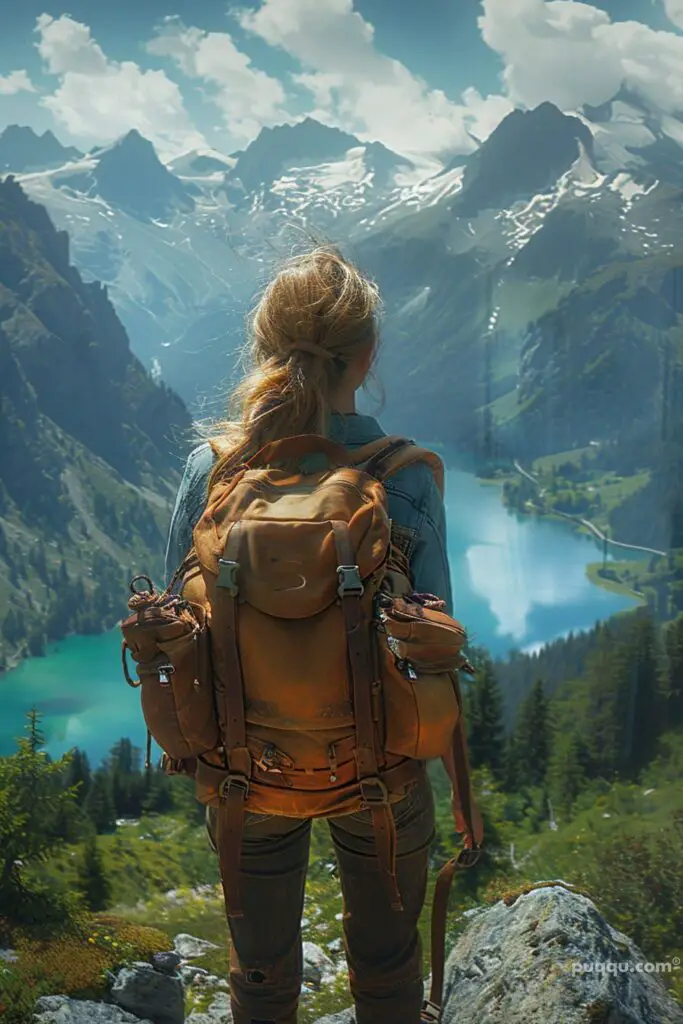Spring is the perfect time to hit the trails and enjoy the great outdoors. With the right outfit, you can stay comfortable and stylish while hiking. Here are some tips and ideas to help you elevate your trail style this season.
Key Elements of a Spring Hiking Outfit
1. Layering for Variable Weather
Description: Spring weather can be unpredictable, with temperatures fluctuating throughout the day. Layering allows you to adjust your clothing to stay comfortable in changing conditions.
Tips:
- Start with a moisture-wicking base layer to keep sweat away from your skin.
- Add a lightweight, insulating mid-layer like a fleece or down jacket for warmth.
- Finish with a waterproof and windproof outer layer to protect against rain and wind.
2. Breathable Fabrics
Description: Choose breathable fabrics to keep cool and dry during your hike. Materials like merino wool, synthetic blends, and moisture-wicking fabrics are ideal.
Tips:
- Look for clothing labeled as moisture-wicking or quick-drying.
- Avoid cotton, as it retains moisture and can lead to discomfort.
- Opt for lightweight, breathable fabrics to stay comfortable in varying temperatures.
3. Sun Protection
Description: Protect yourself from the sun’s harmful rays with appropriate clothing and accessories. UPF-rated clothing, hats, and sunglasses are essential for spring hikes.
Tips:
- Wear a wide-brimmed hat or cap to shield your face and neck from the sun.
- Choose long-sleeved shirts and pants with UPF protection.
- Apply sunscreen to exposed skin and wear UV-protective sunglasses.
Outfit Ideas for Spring Hiking
4. Classic Hiking Ensemble
Description: A classic hiking outfit combines functionality with comfort. This ensemble is perfect for both casual hikes and more challenging trails.
Tips:
- Wear a moisture-wicking t-shirt and a lightweight, long-sleeved shirt for layering.
- Pair with durable hiking pants or shorts that offer freedom of movement.
- Complete the look with sturdy hiking boots or trail shoes and moisture-wicking socks.
5. Sporty and Functional
Description: For a more athletic look, opt for sporty and functional pieces that provide comfort and mobility. This outfit is great for fast-paced hikes and trail running.
Tips:
- Choose a moisture-wicking tank top or sports bra for the base layer.
- Wear lightweight, stretchable leggings or shorts designed for high activity.
- Add a lightweight, breathable jacket for warmth and protection.
- Finish with trail running shoes for maximum support and traction.
6. Casual and Stylish
Description: Combine comfort and style with a casual hiking outfit that’s perfect for social media snapshots. This look is ideal for easy trails and nature walks.
Tips:
- Wear a comfortable, graphic t-shirt or tank top as a base layer.
- Pair with stylish yet functional cargo shorts or capri pants.
- Add a lightweight hoodie or flannel shirt for layering.
- Complete the look with comfortable hiking sandals or sneakers.
Essential Accessories
7. Backpack
Description: A well-designed backpack is crucial for carrying essentials like water, snacks, and extra layers. Choose a lightweight, comfortable, and functional pack.
Tips:
- Look for a backpack with adjustable straps and a padded back for comfort.
- Choose a size that fits your needs; typically, a 20-30 liter pack is sufficient for day hikes.
- Ensure the pack has multiple compartments for easy organization.
8. Hat and Sunglasses
Description: Protect your face and eyes from the sun with a hat and sunglasses. These accessories are essential for sunny spring hikes.
Tips:
- Choose a wide-brimmed hat for maximum sun protection or a cap for a sporty look.
- Opt for UV-protective sunglasses with polarized lenses to reduce glare.
- Consider sunglasses with a secure fit to stay in place during active movement.
9. Trekking Poles
Description: Trekking poles provide stability and reduce strain on your legs and joints, especially on uneven terrain. They are particularly useful for longer hikes and rough trails.
Tips:
- Choose lightweight, adjustable poles that are easy to carry and use.
- Look for poles with comfortable grips and shock-absorbing features.
- Practice using the poles before your hike to get accustomed to the technique.
Footwear Options
10. Hiking Boots
Description: Hiking boots offer excellent support and protection for challenging trails. They are ideal for rocky or uneven terrain.
Tips:
- Choose boots with ankle support to prevent injuries.
- Ensure the boots are waterproof and breathable.
- Break in your boots before your hike to avoid blisters and discomfort.
11. Trail Shoes
Description: Trail shoes are lighter and more flexible than hiking boots, making them ideal for fast-paced hikes and trail running. They offer good traction and support.
Tips:
- Select trail shoes with a sturdy sole and good grip.
- Look for lightweight, breathable materials for comfort.
- Ensure the shoes fit well and provide adequate support for your feet.
12. Hiking Sandals
Description: Hiking sandals are perfect for easy trails, hot weather, and water crossings. They offer comfort and breathability while providing enough support for light hikes.
Tips:
- Choose sandals with adjustable straps for a secure fit.
- Look for designs with good arch support and a sturdy sole.
- Wear moisture-wicking socks to prevent blisters if needed.
Final Touches
13. Layering Essentials
Description: Pack extra layers to stay comfortable in changing weather conditions. Lightweight, packable layers are ideal for spring hikes.
Tips:
- Carry a lightweight, packable rain jacket for unexpected showers.
- Include a thermal layer or fleece for added warmth during cooler parts of the day.
- Use a neck gaiter or bandana for extra protection and versatility.
14. Hydration Solutions
Description: Staying hydrated is crucial for a successful hike. Carry enough water and consider hydration solutions like water bladders or bottles.
Tips:
- Use a hydration bladder with a drinking tube for easy access to water.
- Carry a reusable water bottle and refill it at available sources.
- Consider bringing electrolyte tablets or drinks for longer hikes.
15. First Aid Kit
Description: A small first aid kit is essential for handling minor injuries and emergencies on the trail. Include basic supplies like bandages, antiseptic wipes, and pain relievers.
Tips:
- Pack a compact, lightweight first aid kit in your backpack.
- Ensure the kit includes items for treating blisters, cuts, and insect bites.
- Familiarize yourself with the contents and how to use them.
Conclusion
Elevate your trail style this spring by combining functionality, comfort, and style in your hiking outfits. With the right layering, breathable fabrics, and essential accessories, you can stay prepared for any adventure while looking great. Use these tips and ideas to create the perfect spring hiking outfit and enjoy your time on the trails.
Frequently Asked Questions
What should I wear for spring hiking?
For spring hiking, wear moisture-wicking base layers, a lightweight insulating mid-layer, and a waterproof and windproof outer layer. Choose breathable fabrics and dress in layers to stay comfortable in changing weather conditions.
How can I stay stylish while hiking?
Stay stylish while hiking by choosing functional yet fashionable clothing and accessories. Opt for coordinated colors, stylish hats, and quality footwear. Incorporate trendy pieces like graphic t-shirts, flannel shirts, and stylish backpacks.
What type of footwear is best for spring hiking?
The best footwear for spring hiking depends on the terrain and your hiking style. Hiking boots offer support and protection for challenging trails, while trail shoes are lightweight and flexible for fast-paced hikes. Hiking sandals are ideal for easy trails and hot weather.
How can I protect myself from the sun while hiking?
Protect yourself from the sun by wearing a wide-brimmed hat or cap, UV-protective sunglasses, and clothing with UPF protection. Apply sunscreen to exposed skin and reapply as needed throughout the hike.
What should I pack for a spring hike?
For a spring hike, pack essential items like a lightweight rain jacket, extra layers, a hydration solution, a first aid kit, and snacks. Include trekking poles, a hat, and sunglasses for added protection and comfort.
